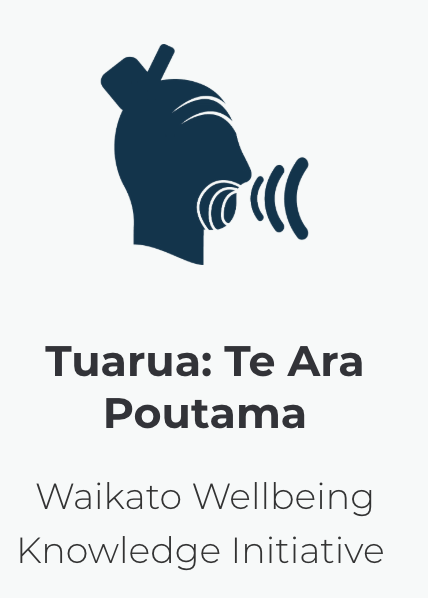In alignment with our 2025-26 Business Plan, we regularly monitor quarterly topical and place-specific updates on key wellbeing issues in the Waikato region.
Overall outlook
In the March quarter of 2025, Waikato's socio-economic landscape is characterised by cautious optimism. While economic activity and confidence are improving, retail and employment levels remain below historic highs. As Waikato continues to evolve, understanding the region’s social and economic dynamics is essential for fostering community well-being.
Recent employment trends reveal both resilience and challenges. The region faces the challenge of balancing short-term employment shocks with medium-term opportunities in housing and community investment amid a nationally uneven economic environment, with underlying shifts within its labour and housing markets.
Labour market dynamics during this period have been complex. While consumer confidence remains resilient, indicating continued household optimism, employment data reveals mounting pressures in core industries. Key regional employers, such as Fonterra and Oji Fibre Solutions, have announced significant job losses, disproportionately affecting Hamilton and South Waikato communities. These changes have hit towns like Tokoroa particularly hard, where the closure of the Kinleith Mill has had a cascading impact on local livelihoods.
The most recent employment data for the Waikato region from Stats NZ, "Employment Indicators: March 2025," show that Waikato experienced a 0.7% decrease in filled jobs, equating to a reduction of 1,672 jobs compared to the previous month.
Despite these setbacks, community institutions have mobilised swiftly. Initiatives like Project Phoenix exemplify the region’s capacity for collective response and economic transition. Concurrently, the housing sector is showing tentative signs of recovery.
Housing is at the heart of these shifts, not only as a cornerstone of individual well-being but also as a key driver of economic opportunity and community resilience. With Waikato facing a shortfall of over 8,000 homes and affordability pressures continuing to mount, the need for quality, accessible housing is shaping everything from workforce mobility to social equity. House sales in Waikato increased by 12.4% year-on-year, surpassing the national average and suggesting a revival in confidence within the property market.
However, this momentum exists alongside real structural barriers. In Hamilton, constraints in wastewater infrastructure have halted several proposed developments. The contradiction is evident: at a time when affordable, accessible housing is crucial for equitable well-being, regulatory and infrastructure bottlenecks are restricting supply in areas with high demand.
Regional Focus: Housing Affordability in Waikato
Current Housing Landscape
Housing costs continue to impact Waikato households significantly. On average, Waikato households spend approximately one-fifth of their disposable income on housing costs, though this ratio has remained relatively stable compared to 2007 baseline levels.
Did You Know?
Housing affordability in the Waikato (and New Zaland) continues to worsen, with the median price: household income ratio for the region currently sitting at about 6.7, which Demographia describes as “severely unaffordable”. As an example, for Hamilton City, data from the Ministry of Housing and Urban Development has shown since December 2003:
Average house prices have increased 282%
Average interest prices have risen 215%
Median household incomes have risen 122% (i.e. house prices have risen at more than twice the rate of incomes)
The rent price index had increased by 110% (i.e. relatively close to changes in income)
Rental affordability has improved by 5%
Mortgage serviceability has reduced by 30% and deposit affordability has reduced by 42%
Waikato Housing Facts from CoreLogic, February 2025:
The average price of a Waikato property as of March 2025 is $753,706.
Property prices in the Waikato decreased by 0.73% over the first three months of 2025.
The average weekly rent in the Waikato region is $590 (as of February 2025).
Raglan is the most expensive suburb in the Waikato with an average house value of $1,088,850, while Meremere is the most affordable at $498,950.
Waikato property prices have increased by an average of 7.43% annually over the 20 years from March 2005 to March 2025.
Despite a record number of houses being built in the region over the past 5 years, few were affordable. This situation has arisen despite practically every central and local government organisation saying that “affordable” housing is a priority. This creates a credibility gap for everybody between what is said and what is done.
While housing in the Waikato region tends to be more affordable than the national average (particularly compared to Auckland), affordability remains a concern for many residents. The challenge is particularly acute when we consider that New Zealand ranks 40th out of 41 OECD countries in terms of housing affordability.
Waikato Housing Initiative (WHI) and the Waikato Wellbeing Project (WWP) are jointly committed to a housing system that provides affordable housing for everybody in the Waikato region.
The WHI includes representatives from all parts of the housing system. The WHI has a mission that “every person and every family in the Waikato region is well housed, living in sustainable, flourishing and connected communities.” For the Waikato region, “well housed” means timely access to habitable, affordable, accessible, culturally appropriate, appropriately located and with security of tenure, as defined by the United Nations as a human right.
That raises the question- what would it take to make housing affordable in the Waikato? At present, the Waikato region has not identified and tested the measures which could return housing to affordable levels over an equitable time frame. Without this, ‘affordable housing’ risks remaining a slogan.
The flow on effects of this are profound in terms of the wellbeing benefits of secure housing, whether to rent or to own. Those benefits are not only financial, but also social, cultural and health related. Even the ability to be food secure is related to housing affordability. Our research on kai in 2024 showed that food deprivation is not an issue of individual choice. From the perspective of almost every household/whanau, having sufficient income available for food is the end-result of the affordability of all other household items, especially housing costs.
This is why poverty metrics are calculated both before and after housing costs are accounted for. The affordability of housing affects both people’s ability to have shelter, and their ability to feed themselves and their family. For many, the food issue is a housing affordability issue.
The purpose of this project will be to undertake a thorough analysis of the current situation regarding housing affordability in the region (using existing data as much as possible), and to propose a package of interventions and options which would make a positive difference. The project will use case studies of urban brownfield (e.g. Enderley- Fairfield), peri-urban greenfield and rural locations to show how these interventions could work and how much of a difference they could make. This work will be jointly commissioned with the Waikato Husing Initiative, utilising funds provided to the WWP by Trust Waikato.
In alignment with our commitment to actively engage with our communities and foster a positive impact on their future, we will prioritise housing affordability as a vital component of overall wellbeing. Accordingly, we are working to understand this topic in the coming months, supported by research, accompanying information, and an insight series.
Promising Developments
A significant step forward came in October 2024 with a $35 million Government investment enabling the delivery of 100 affordable rental homes in partnership with Waikato-Tainui. The Hopuhopu Housing Development, located on 170 hectares of land owned by Waikato-Tainui, includes 57 affordable rental homes and infrastructure for an additional 43 homes just north of Ngāruawāhia.
This development is significant as Waikato has the highest number of emergency housing use in the country, and nearby Hamilton has the third highest number of applicants on the Housing Register of any territorial authority.
Get Involved with us.
If you are interested in a more detailed analysis or wish to propose a regional sector topic backed by data, research, or insights that could enhance Te Ara Poutama, please reach out to us. We highly value collaborative efforts and welcome your contributions, which can help build a more comprehensive understanding of wellbeing factors in our region.
For more information on Te Ara Poutama, and to explore our digital library and community compass reports, visit our website at waikatowellbeingproject.co.nz/te-ara-poutama3.


